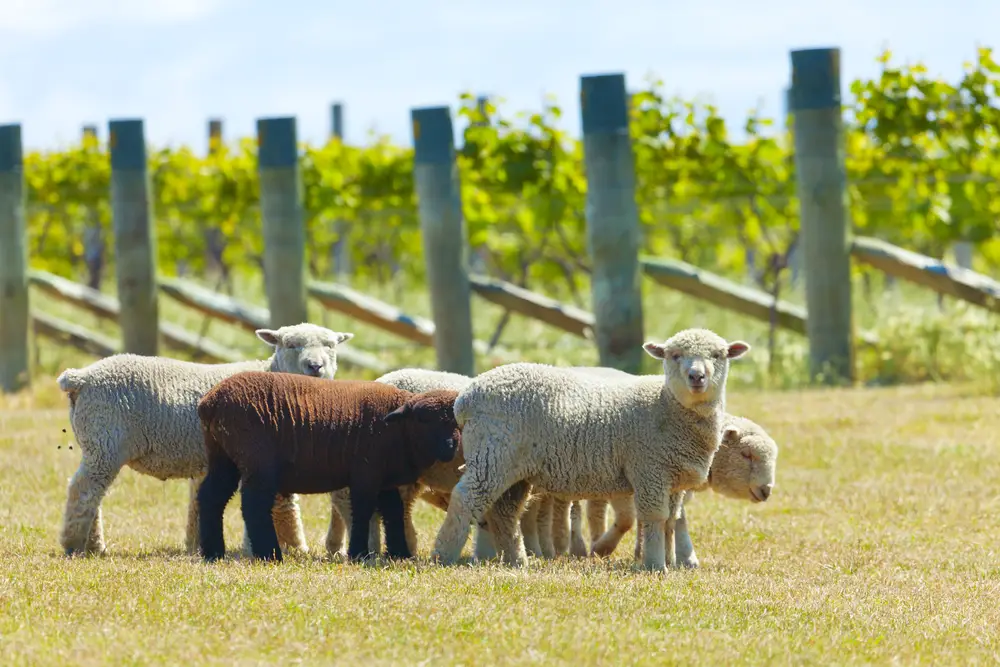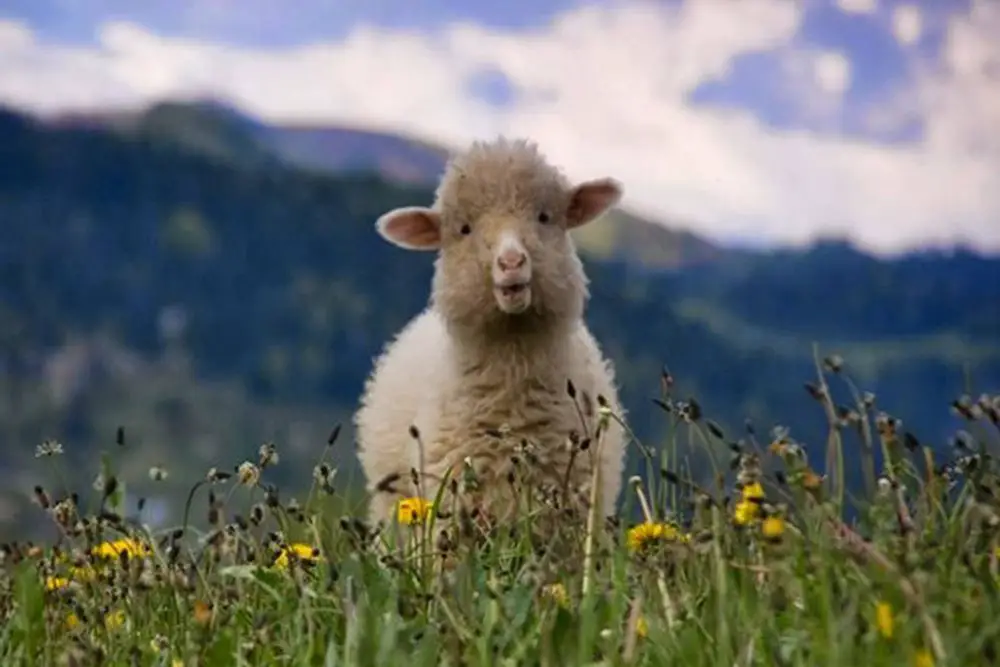Known as sheep that always smile, Babydoll sheep have teddy bear faces, and ultra-soft fleece. They are often kept as pets and widely used in 4-H projects due to how easy they are to care for.
If you want the full scoop on Babydoll sheep, you’ve come to the right place!
This article is full of fun facts about this darling, diminutive sheep including their history, characteristics, fleece attributes, and why you may want to consider raising Babydoll sheep on your farm.
Table of Contents
Where Does The Babydoll Sheep Come From?
John Ellman first bred the Southdown breed in Sussex County in the late 18th century in England.
Over the course of 20 years he began an extensive breeding program, selecting for desirable traits including small size, docile disposition, and hardiness.
The results of his diligence can be seen in all of the desirable traits of the Babydoll sheep (sometimes referred to as the original Southdown sheep). They enjoyed notoriety and were popular for nearly 100 years, and exported to North America in 1803.
His improved sheep breed, unfortunately, lost popularity in the early 1900s during the world wars, as they were small and had little meat.
The Southdown was at this point bred to have longer legs and a larger size, and the small sheep were shunted aside in favor of the newer breed of Southdown, effectively splitting the breed into two varieties.
These miniature sheep were believed to be extinct until Robert Mock began searching for flocks with any ties to the original bloodlines and connection to the original Southdown sheep in the late 1980s.
Luckily, he was successful in locating flocks with these characteristics and he set about creating the Olde English Babydoll Southdown sheep registry, where Babydoll Southdown sheep could be officially registered in the United Kingdom.
As the popularity of these Babydoll sheep grew in Canada and the United States, another official registry was formed: the North America Babydoll Southdown Sheep Association and Registry, also known as NABSSAR.
Any evidence of crossbreeding in a Babydoll sheep makes it unable to be registered, so all registered members of this breed display no evidence of being crossed with other sheep. Strict breed standards are enforced to preserve the quality of Babydoll sheep.
Babydoll Sheep Breed Characteristics
| Origin | Babydoll sheep are the smallest British breeds of sheep. |
| AppearanceThey come as both white sheep and black sheep and live 8 to 10 years. White Babydolls can range from a true white to off-white color while Black Babydolls can have reddish brown tones. Their eyes should be quite large and range from yellow to brown. They should have wide necks, with well-sprung ribs, and muscular legs. Babydoll ewes should have a feminine appearance Babydoll rams should have a distinctive masculine appearance and a wide rectangular frame with both testicles fully distended. Strict conformation and breed standards exist for Babydoll sheep. | |
| Wool | Staple length: 2 to 3 inches long. Micron range: 19 to 22 Spinning Count: 56’s to 60’s Texture: Crimped and lofty |
| Weight | Rams and Ewes weigh between 60 and 120 pounds |
| Height | They range in height between 18 and 24 inches |
| Meat | Very average. Rarely eaten due to being an ornamental and wool breed. |
| Environment | Cool to cold |
| Fertility | Babydoll ewes make wonderful mothers and are capable of caring for twins as this occurs often, and have two fully formed udders. It is not unheard of for a Babydoll ewe to have triplets. |
| Common uses | Wool production and petting zoos |

Many people choose to have wether’s (castrated rams) as they can live peacefully with ewes.
What Kind Of Fleece Does Babydoll Sheep Produce?
Babydoll sheep are well-known for their excellent wool. Their fleece is in the class of cashmere and soft enough to be worn on skin.
Spinners and weavers love producing textiles and clothing out of Babydoll fleece because it has such a lovely texture, takes well to dye, and can be mixed with other fibers.
Why Should I Raise Babydoll Sheep?
There are many reasons why you should consider raising Babydoll Sheep on your sheep farm:
- You won’t need your lawnmower anymore with these diminutive sheep around as they are happy to graze on the grass in your backyard
- Well known for their hardiness if they are provided all required vaccinations
- These little sheep require much less pasture to maintain
- Most domesticated sheep are white but you can get black Babydoll sheep
- Perfect for hobby farms and to keep as family pets
- Have fine, cashmere-like fleece that hand spinner’s love
- They are docile and have distinctive personalities with individual traits
- Often called “easy keepers” for their feed conversion
- Ewes make excellent mothers
- They are gregarious (love to be in large flocks)

